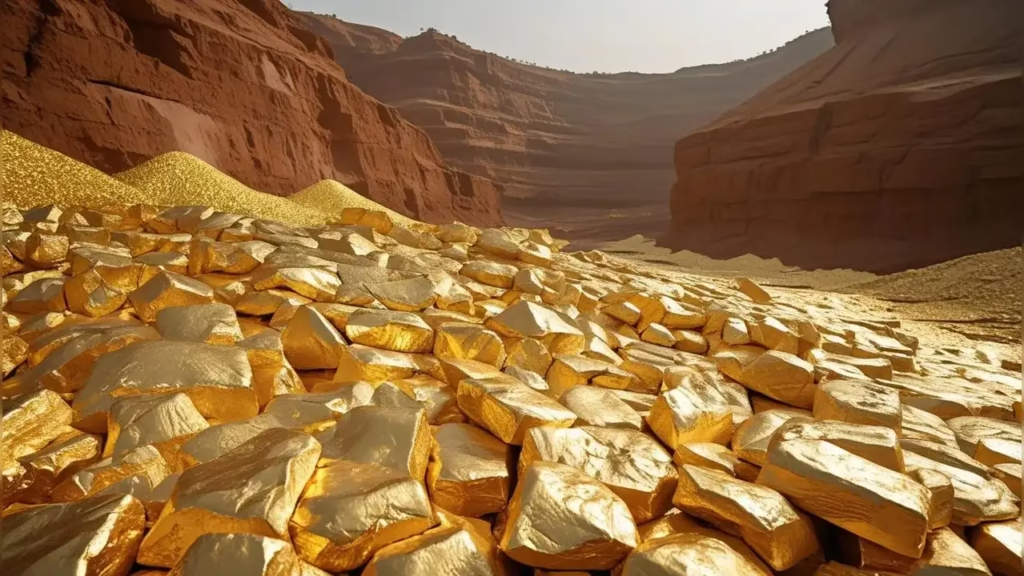Geological Survey of India Confirms Discovery
Odisha, India – August 2025: In a groundbreaking revelation, the Geological Survey of India (GSI) has confirmed the discovery of significant gold deposits in Odisha, spread across at least four key districts. This discovery has sparked excitement not only within the state but across the nation, as it has the potential to boost India’s gold reserves and reduce dependency on imports.
According to officials, the newly identified gold-bearing areas include Keonjhar, Deogarh, Mayurbhanj, and Sundargarh districts. These regions are already known for their rich mineral belts, but the confirmation of large-scale gold deposits marks a major milestone in India’s mining history.
The Discovery: How GSI Uncovered Odisha’s Hidden Gold
The Geological Survey of India, a premier organization under the Ministry of Mines, has been conducting extensive surveys across mineral-rich states. Odisha, with its unique geology and history of mineral discoveries, has always been a key focus area.
Using aeromagnetic surveys, geochemical sampling, and advanced exploration techniques, the GSI teams identified zones with high potential for gold mineralization. After detailed ground verification and drilling studies, the presence of gold was confirmed in multiple blocks of the above-mentioned districts.
A senior GSI official stated:
“Our preliminary assessments indicate that Odisha has a significant untapped gold resource. With proper exploration and sustainable mining, these reserves can play a major role in strengthening India’s mineral economy.”
Why Odisha? The State’s Rich Mining Legacy
Odisha is one of India’s mineral powerhouses, home to vast deposits of iron ore, bauxite, manganese, coal, and chromite. With this discovery, the state adds another feather to its cap by entering the gold mining map of India.
The four districts identified – Keonjhar, Deogarh, Mayurbhanj, and Sundargarh – are part of the mineral-rich belt of eastern India. Historically, these areas have seen small traces of gold in riverbeds and rocks, but this is the first large-scale scientific confirmation of substantial deposits.
Mining experts believe Odisha could soon join states like Karnataka, Jharkhand, and Chhattisgarh, where gold has traditionally been mined in India.
Economic Significance of the Discovery
The discovery of gold deposits in Odisha carries far-reaching economic implications for both the state and the nation.
- Reducing Gold Imports
India is one of the world’s largest consumers of gold, importing nearly 800–900 tonnes annually, which places a heavy burden on the trade deficit. Domestic production from Odisha could significantly cut down these imports. - Boosting Odisha’s Economy
Gold mining can provide a strong push to Odisha’s economy. The development of mining projects will attract domestic and foreign investments, generate revenue for the state government, and create opportunities for local industries. - Employment Generation
From exploration to extraction, gold mining creates thousands of direct and indirect jobs. Skilled and unskilled workers in these districts may benefit from new employment opportunities, helping reduce regional unemployment. - Strengthening the Jewellery Industry
India’s jewellery sector, a major contributor to exports, will gain from locally sourced gold. Odisha’s reserves could provide a reliable supply for jewelers and reduce price fluctuations.
Environmental and Social Considerations
While the discovery is promising, experts have warned that gold mining should not come at the cost of environmental degradation. Odisha’s mineral belts are ecologically sensitive and home to tribal communities.
The state government and GSI have emphasized the importance of eco-friendly mining practices and ensuring that local communities benefit from the projects. Proper rehabilitation, revenue-sharing, and corporate social responsibility (CSR) initiatives will be crucial.
Government’s Next Steps
The Government of Odisha, in collaboration with the Ministry of Mines and GSI, is expected to initiate detailed feasibility studies. Once the reserves are quantified and economically viable, mining leases may be auctioned to private companies and public-sector units.
The focus will be on:
- Sustainable mining policies to balance economic and environmental interests.
- Skill development programs for local youth in mining-related jobs.
- Infrastructure development in identified districts, including better roads, housing, and healthcare.
The Chief Minister of Odisha welcomed the discovery, stating:
“This is a historic moment for our state. Odisha has always been rich in minerals, and now with gold deposits, we are entering a new era of economic development.”
India’s Position in Global Gold Production
Currently, India ranks very low in global gold mining, despite being one of the largest consumers. Countries like China, Russia, Australia, and the USA dominate global production.
With Odisha’s discovery, India has a chance to improve its position. If reserves are found to be as significant as early reports suggest, India could reduce its import bills and increase self-reliance in gold production – aligning with the government’s “Atmanirbhar Bharat” (Self-Reliant India) vision.
Challenges Ahead
Although the discovery is promising, several challenges lie ahead:
- High cost of gold extraction compared to other minerals.
- Technical complexities in mining and refining.
- Environmental clearances and community consent.
- Global price fluctuations that may impact profitability.
Overcoming these hurdles will require careful planning, technological innovation, and strong government regulation.
Conclusion
The discovery of gold deposits in Odisha by the Geological Survey of India marks a historic milestone in India’s mining sector. The identification of reserves in Keonjhar, Deogarh, Mayurbhanj, and Sundargarh districts has the potential to transform not just Odisha’s economy but also contribute significantly to India’s overall mineral wealth.
If managed wisely, these gold reserves could reduce India’s dependency on imports, create thousands of jobs, and provide a new source of prosperity for the state. However, striking a balance between economic benefits and environmental sustainability will be key.
As exploration continues and more detailed reports emerge, Odisha is poised to shine brightly on India’s mineral map – quite literally, with the glitter of gold beneath its soil.







